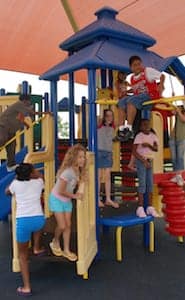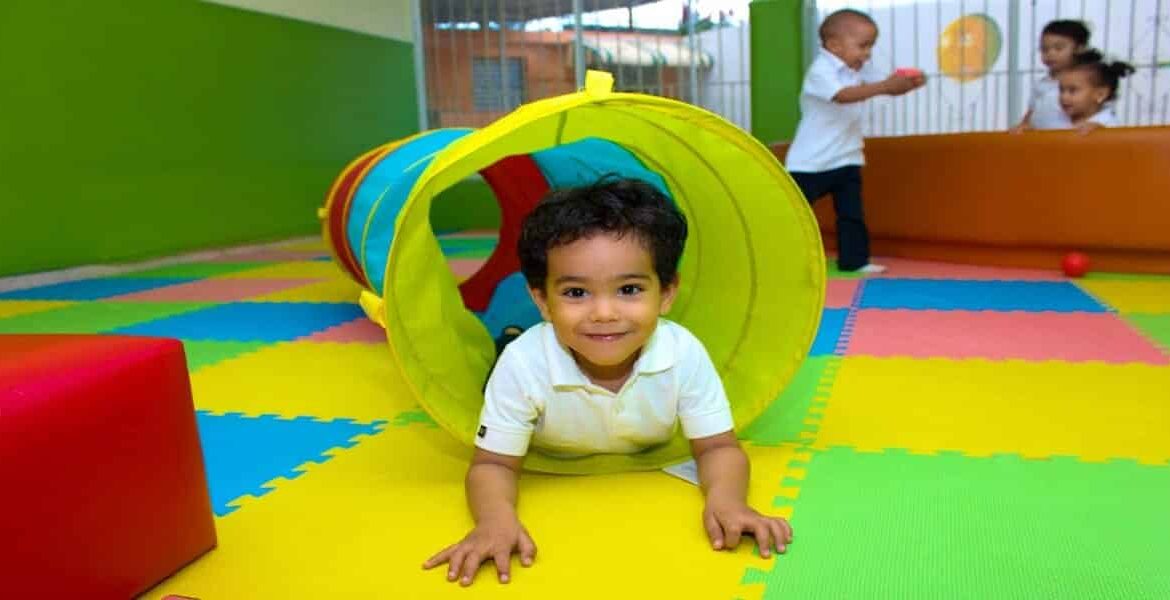Promote a healthy play diet mix of digital, social, active, creative, and free play by Randy Kulman
![]() Most educators, pediatricians, and child psychologists would agree that 21st-century kids need to play more. Kids (and adults!) learn and benefit from play. Whether the reduction of playtime is the result of the demands of the classroom, busy schedules, or the preponderance of video games and other technology, our kids seem to have lost the art of unstructured and creative play. They are also less likely to spend time outdoors or be engaged in physical activities (aside from organized sports) and have less face-to-face contact with their peers.
Most educators, pediatricians, and child psychologists would agree that 21st-century kids need to play more. Kids (and adults!) learn and benefit from play. Whether the reduction of playtime is the result of the demands of the classroom, busy schedules, or the preponderance of video games and other technology, our kids seem to have lost the art of unstructured and creative play. They are also less likely to spend time outdoors or be engaged in physical activities (aside from organized sports) and have less face-to-face contact with their peers.
As a clinical child psychologist, I often speak to teachers about the importance of play in children’s lives. The typical feedback I get is that there is no time for play in the classroom — even if it’s key to developing social-emotional and executive functioning skills. And when there is time for free play in the classroom, often kids just choose to play a video game or use other technology, just like they do at home. As we know, screen time is sometimes offered as a reward for completing classwork.
For children to achieve healthy development, they need to spend their playtime not only with digital play but also with social play, active play, creative play, and free play.
 Many teachers are concerned that their students are so engaged with digital technology that they no longer pay attention in the classroom. Some kids are sneaking a peek at their cell phones or surreptitiously texting instead of listening to the teacher. The interactive nature of technology and the immediacy of feedback provide a level of entertainment that is difficult for teachers to match.
Many teachers are concerned that their students are so engaged with digital technology that they no longer pay attention in the classroom. Some kids are sneaking a peek at their cell phones or surreptitiously texting instead of listening to the teacher. The interactive nature of technology and the immediacy of feedback provide a level of entertainment that is difficult for teachers to match.
The same holds true at home, where many kids choose to be engaged with screens over other forms of play. But this is not just a kid problem. Adults are modeling this behavior. Recent evidence from Common Sense research suggests that adults are spending almost 9 1/2 hours a day in front of screens.
Too much digital play leaves little time for other forms of play. It also restricts the type of learning and opportunities for enhancing the social-emotional and executive functioning skills that are crucial to kids’ happiness and success in the 21st century. This is why I encourage teachers, parents, and kids to find ways to develop a healthy and balanced “play diet.” For children to achieve healthy development, they need to spend their playtime not only with digital play but also with social play, active play, creative play, and free play. Just like a nutritional diet, a healthy play diet is balanced but also accounts for individual needs and preferences. Some kids love to play sports while others might prefer that their active play is taking a walk.
When it comes to nutrition, it goes without saying that one can eat too much of even the “best” foods (just think about the impact of eating too much broccoli), and it works the same way when it comes to a child’s play. A child who spends all his time on individual artistic pursuits may have very few friends. Of much greater concern for 21st-century kids is the child who spends hours in front of a screen, to the exclusion of active, social, unstructured, or creative play.
How to Model Healthy Play
In the classroom, where so much time is devoted to getting schoolwork done, it may be difficult to model and encourage a healthy play diet. Outside the classroom, many homework assignments, research, and even projects require the use of digital media and screens.  However, there are several ways in which teachers can modify homework, project-based learning, and even direct instruction to encourage other forms of play. Adding a little play to your students’ day and helping them develop a healthy play diet will make them more engaged and help them learn more. Here are some suggestions:
However, there are several ways in which teachers can modify homework, project-based learning, and even direct instruction to encourage other forms of play. Adding a little play to your students’ day and helping them develop a healthy play diet will make them more engaged and help them learn more. Here are some suggestions:
- Get your classroom moving and stretching. Next time you give a test, spend five minutes doing some standing exercises and stretches (make the test shorter if necessary). Give the children a brief explanation of how exercise produces brain proteins that enhance concentration and emphasize the importance of physical play.
- Model a healthy play diet by describing how you learn from conversations with others or how going outdoors helps you regain focus.
- Encourage “whole play” homework activities. Whole play, which combines different types of play, helps students engage in social or physical activities along with using digital media. For example, create a homework assignment that requires students to work in teams (social play) and take pictures (digital play) of objects they need to find by walking (active play) for a math or science project.
- Give extra credit for non-digital play. Create homework assignments where innovation and group creativity without technology is rewarded.
- Create projects and assignments that purposefully do not use technology, and discuss how to learn via traditional play and research.
This article originally appeared on Common Sense Education.
Author
 Randy Kulman, Ph.D. is the Founder and President of LearningWorks for Kids, an educational technology company that specializes in using video games to teach executive-functioning and academic skills. For the past 25 years, Dr. Kulman has also been the Clinical Director and President of South County Child and Family Consultants, a multidisciplinary group of private practitioners that specializes in assessment and interventions for children with learning disorders and attention difficulties.
Randy Kulman, Ph.D. is the Founder and President of LearningWorks for Kids, an educational technology company that specializes in using video games to teach executive-functioning and academic skills. For the past 25 years, Dr. Kulman has also been the Clinical Director and President of South County Child and Family Consultants, a multidisciplinary group of private practitioners that specializes in assessment and interventions for children with learning disorders and attention difficulties.
Common Sense Education helps educators find the best edtech tools, learn best practices for teaching with tech, and equip students with the skills they need to navigate the digital world with confidence. Get free resources including full reviews of digital tools, ready-made lesson plans, videos, webinars, and more at Common Sense Education.
Dr. Kulman is the author of numerous essays on the use of digital technologies for improving executive-functioning skills in children. His current research projects include the development of a parent and teacher scale for assessing executive-functioning skills in children and a large survey study examining how children with ADHD and Autism use popular video games and apps. He is the author of two books; Train Your Brain for Success: A Teenager’s Guide to Executive Functions and Playing Smarter in a Digital World. You can follow Randy Kulman on Twitter, and LearningWorks For Kids on Twitter as well.
Further Reading
- Parents Magazine – The Importance of Play
- LeapFrog – Playtime is essential to a child’s development
- Psychology Today – Having Fun Must be Taken Seriously
